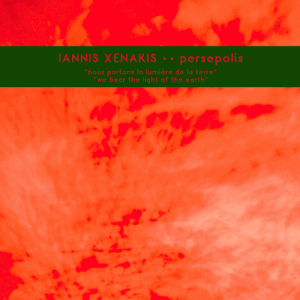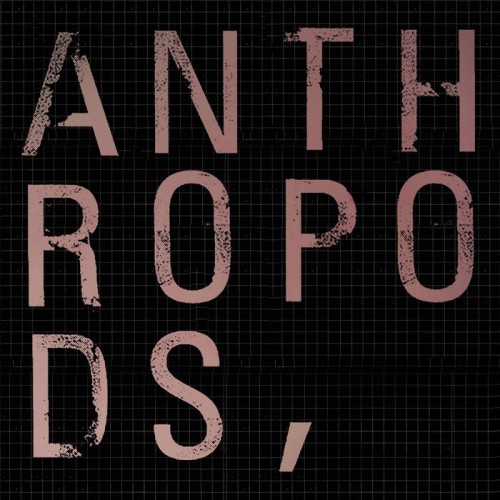 Mohammad Reza – better known to the world as the (last) Shah of Iran – was not a hugely likeable man. In 1979, as a youngster struggling to make sense of the images of the unfolding revolution that were flooding in via the BBC Six O’clock News, I remember my father explaining it to me: though the Shah might well help you up if he saw you trip over in the street, he was not a good man, and had run the country badly, with greed and cruelty. And that was why people wanted to get rid of him. The previous December it is reckoned that a total of between six and nine million – more than 10% of the country – had marched against him. It was not only in his home country, though, that the Shah was reviled: his 1967 visit to West Berlin lead to a volatile demonstration in which student protestor Benno Ohnesorg was killed, the events becoming precipitant factors in the burgeoning German student movement and counter-culture.
Mohammad Reza – better known to the world as the (last) Shah of Iran – was not a hugely likeable man. In 1979, as a youngster struggling to make sense of the images of the unfolding revolution that were flooding in via the BBC Six O’clock News, I remember my father explaining it to me: though the Shah might well help you up if he saw you trip over in the street, he was not a good man, and had run the country badly, with greed and cruelty. And that was why people wanted to get rid of him. The previous December it is reckoned that a total of between six and nine million – more than 10% of the country – had marched against him. It was not only in his home country, though, that the Shah was reviled: his 1967 visit to West Berlin lead to a volatile demonstration in which student protestor Benno Ohnesorg was killed, the events becoming precipitant factors in the burgeoning German student movement and counter-culture.
Ten years before the Iranian Revolution, though, the Shah’s position had looked rock solid. He had even been asked by NASA to submit one of seventy-three “Goodwill Messages” for the world-historic Apollo 11 lunar landing. The message still rests on the moon’s surface today. In it, Reza stated in part that “we pray the Almighty God to guide mankind towards ever increasing success in the establishment of culture, knowledge and human civilisation”.
And, if there was ever a cultural baby thrown out with a political bathwater, the crowning work of the Shah’s wife, Queen Farah Pahlavi,i was one of them. Well known for her patronage of the arts, it reached its generally-acknowledged apogee in the truly incredible Shiraz Arts Festival. Congruent with her husband’s interest in hybridising a technologically modern state with a traditional cultural context, between 1967 and 1977, the annual Shiraz Festival took place with a mission directive to bring together, and facilitate a cultural conversation between, the leading musicians of East and West.Featuring lectures, debates and plenary symposia, the festival program included music, dance, drama and film from around the world, performed in a variety of locations in Shiraz and its surrounding areas. The venues, including the ruins of Persepolis (ceremonial capital of ancient Persia), were breath-taking, and matched only by the utterly awe-inspiring roster of cross-genre artists taking part: Hossein Tehrani, Jalil Shahnaz, Bismillah Khan, Pran Nath, Ravi Shankar, Yehudi Menuhin, Arthur Rubenstein, John Cage, Karlheinz Stockhausen, Cathy Berberian, Morton Feldman, Krzysztof Penderecki, Gordon Mumma, David Tudor, Max Roach, The Staple Singers, and Dave Dee, Dozy, Beaky, Mick and Titch. The list, quite literally, goes on and on. I was joking about Dave Dee, Dozy, Beaky, Mick and Titch, though.
And amidst this explosive flowering of electronic and avant-garde arts, Iannis Xenakis was another to write for and perform at Shiraz. Indeed, Xenakis developed a particularly close relationship with the Festival,ii his work appearing on three occasions. In 1968, he presented Nuits, a piece dedicated to political prisoners, and the following year Persephassa (a joint commission of Radio France and the Festival of Arts), which linked the ancient Greek goddess Persephone with parallel Persian and other ancient myths.Xenakis’ next commissioned work was the multimedia extravaganza, Polytope de Persepolis, constructed on 8-track analogue tape in the Studio Acusti in Paris and premièred on 26 August 1971 at the ruins of the titular Persepolis. The work was described in the contemporary festival program notes as a dramatic depiction of “the history of Iran, fragment of the world’s history… elliptically and abstractly represented by means of clashes, explosions, continuities and underground currents of sound.”
And flaming Hellfire, it doesn’t disappoint. Re-released as part of the PERIHEL series (after many years out of print) and re-mixed from the original 8-track tapes by Zeitkratzer sound engineer Martin Wurmnest, this is a take-no-prisoners sonic attack of the highest order. Across nine parts, the piece skitters, slides, hoots and clangs like there’s no tomorrow. Removed from the rather arid context of electro-acoustic composition and instead contrasted to “avant-rock”, it still sounds fantastically ahead of the curve, too: “Persepolis #1” could easily pass for an off-cut of “Blue and Yellow”-era This Heat; as a musical ready-meal, Scott Walker could improvise a few lyrics about disease or punching donkeys over “Persepolis #3” and, bingo, have a glorious centre-piece for his next album; and any time Neubauten fancy going back to their roots, a cover of “Persepolis #8” should do them nicely. Contemporary reports of the live festival offer a mouth-watering memory. After a performance of one of Xenakis’ pieces from the late 1950s, lights filled the skies, bonfires blazed, lasers lit up the ancient ruins and torch-bearing children mounted the surrounding hills whilst the sounds of Persepolis were diffused through six eight-channel listening stations positioned amongst the ruins: “Suddenly, the groups of children disperse and climb down the mountain in constellation-like figures (the two horizontal lines of dots represent spatial landmarks on the sketch) and finally congregate between the two tombs where their torches spell out in Persian ‘We bear the light of the earth,’ a phrase by Xenakis. One last outburst and the 150 torch-bearers run past the ravine and disappear through the crowd into the forest of the Apadana’s columns. The speakers grow quiet and Persepolis recovers its mineral silence… In real-time, Xenakis directed the spectacle from a control console with a walkie-talkie.”iiiAs an interesting comparator, the same year, the crowds at the Crystal Palace Bowl were wowed by Pink Floyd’s appearance at the annual Garden Party festival. In near monsoon-like rains, The Floyd presented their recent Atom Heart Mother suite with a quadraphonic sound system, speakers positioned at various points in the grounds and a finale featured orange smoke bombs, fireworks and a giant rubber octopus. One cannot help but conclude that the Iranians probably edged ahead in the deal.
Critical reaction to Xenakis’ new work was rather mixed, though French composer, music writer and festival organiser in his own right, Maurice Fleuret commented that Persepolis “will be a landmark in the evolution of one of the most speculative and general philosophies of our time, especially by its annexation of vast acoustic and visual spaces and by placing living human presence within a mechanism that is dominated by musical logic.” Time was, evidently, a harsh critic of both Fleuret’s judgement and Xenakis’ work – its disappearance from availability hardly betokening a landmark – yet there is no escaping the fact that the scale and ambition of Persepolis, both in recording and live performance, was staggering. This is music that draws huge lungfuls of historical and cultural oxygen, and aims to provoke an almighty twang in the great cosmic vibration.With the advent of the dull theocracy that followed 1979, the Shiraz Arts Festival, sadly, slipped slowly into the mists of history.iv What need for a peaceful, thrilling, collaborative and international search for meaning when you already have all the answers and a holy book to justify them?
Still, if you get yourself a copy of this re-issue – along with lights, lasers, eight massive PA stacks and 150 willing volunteers – you could conceivably hire a modest ruin somewhere on a Greek island and recreate the experience.It would probably be worth it.
-David Solomons-
i The Shah was, apparently, well known for being attracted to tall women. As Queen Farah was taller than her husband, he habitually wore built-up shoes to disguise the fact. Usually, when the imperial couple were photographed, one or both would be sitting in a chair or alternatively, if photographed on a staircase, the Shah would stand on an upper step.
ii Being an architect as well as a composer, Xenakis was commissioned to design a spectacular arts complex allied to the festival. According to documents later found in the Xenakis Archives, the project was to be an interdisciplinary and collaborative “scientific research centre” for sound and visual arts, cinema, theatre, ballet, poetry and literature, to “continue all the activities year-round of the Annual Festival of Shiraz-Persepolis.” In addition to public presentations, the centre would support on-going work by up to forty visiting and fifty permanent artists, scientists and staff members. The plan included forward-looking studies of traditional arts and “a Centre for Studies of Mathematical and Automated Music”. It was to include laboratories for digital and analogue music, film sound editing, and two recording studios, a library and repair workshop and a 10,760 square foot ‘Hall of Nothingness’. The proposed budget for the entire project was to be a cool 7 million US Dollars. Sadly, the centre was never built.
iii The description was given by Sharon Kanach, who worked very closely with Xenakis for two decades, both as a translator of his works and as vice-president of Centre Iannis Xenakis in France.
iv In 2015, the Whitechapel Gallery in London hosted a small but perfectly-formed exhibition about the festival, A Utopian Stage: The Arts Festival of Shiraz-Persepolis. The photos of Stockhausen’s appearance alone were worth their weight in gold.



